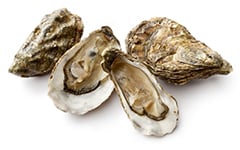Vibrio and Oysters
Many people enjoy eating raw oysters, and raw oyster bars are popping up at some of the trendiest restaurants. But eating raw oysters and other undercooked seafood can put you at risk for infections, including vibriosis, which is caused by certain strains of Vibrio bacteria.
Vibrio bacteria naturally inhabit coastal waters where oysters live. Because oysters feed by filtering water, bacteria can concentrate in their tissues. When someone eats raw or undercooked oysters, viruses or bacteria that may be in the oyster can cause illness.
Most Vibrio infections from oysters result in only diarrhea and vomiting. However, some infections, such as those caused by Vibrio vulnificus, can cause more severe illness, including bloodstream infections and severe blistering skin lesions. Many people with V. vulnificus infections require intensive care or limb amputations, and 15-30% of infections are fatal.
An oyster that contains harmful bacteria doesn’t look, smell, or even taste different from any other oyster.
While most vibriosis cases occur during warmer months of the year, cases have been reported year-round.
Hot sauce and lemon juice don’t kill Vibrio bacteria. Drinking alcohol while eating oysters doesn’t kill Vibrio bacteria either. Cooking oysters properly kills harmful bacteria.
